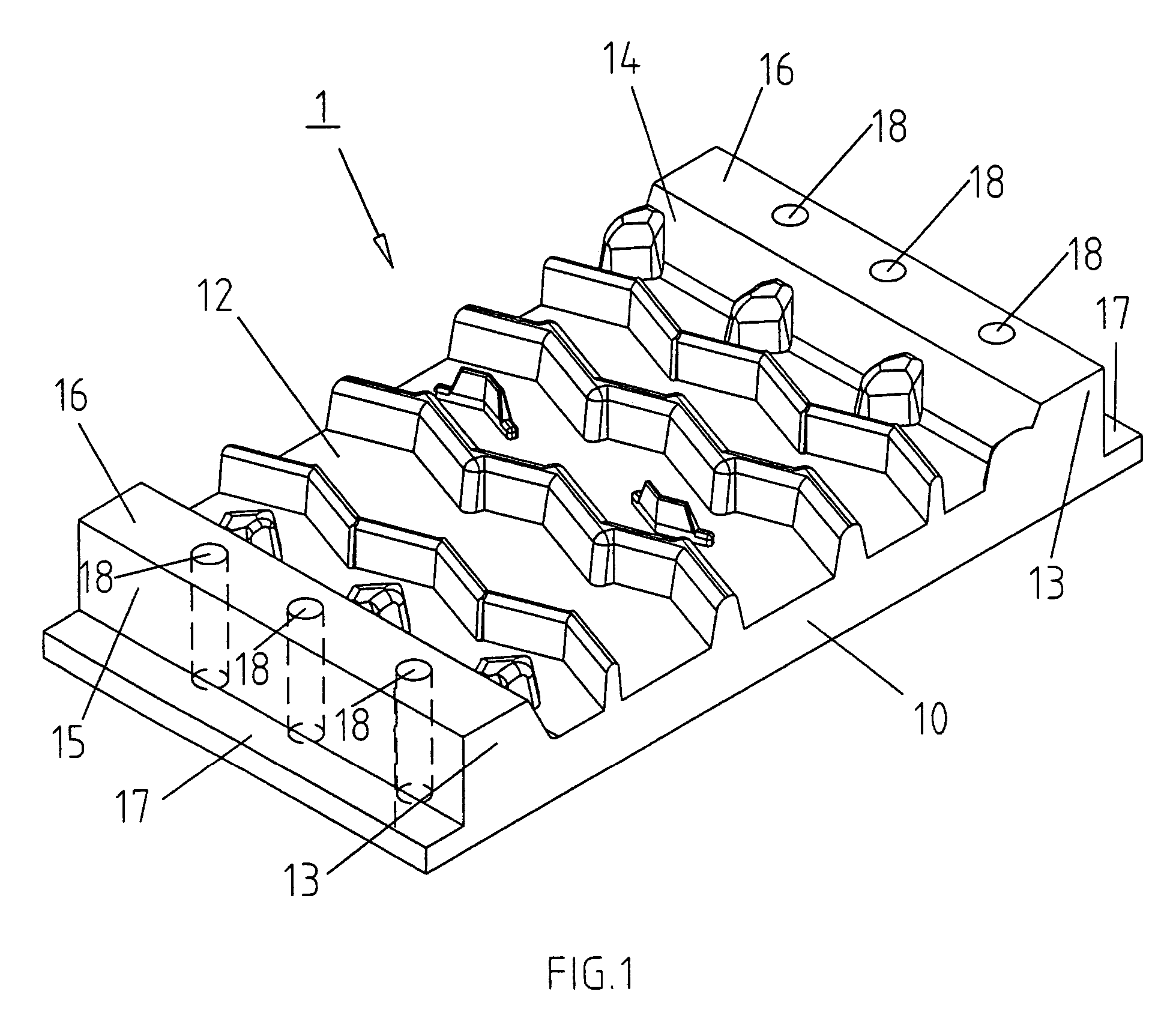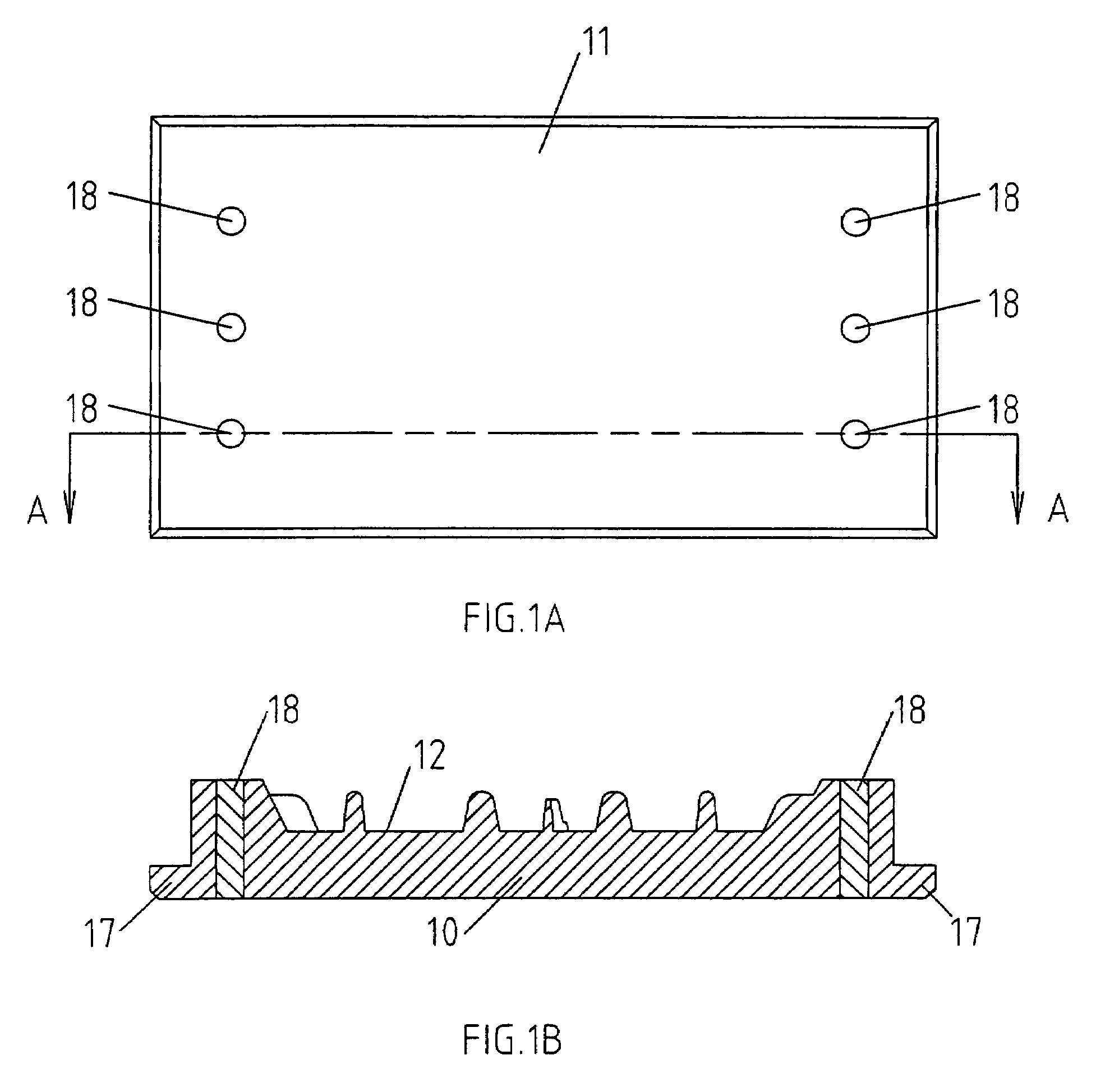Method of strengthening of moulds of aluminum or its alloy
a technology of aluminum or its alloy and mould walls, which is applied in the direction of cocoa, sweetmeats, dough shaping, etc., can solve the problems of increasing the number of rejected moulded items, the contact surfaces of the mould walls are worn and deformed to a certain extent, and the mould walls are deformed and worn, so as to prevent the deformation and wear of the mould walls and extend the service life of the mould in general.
- Summary
- Abstract
- Description
- Claims
- Application Information
AI Technical Summary
Benefits of technology
Problems solved by technology
Method used
Image
Examples
Embodiment Construction
[0016]Shown in FIG. 1 is a mould (1) whereby there is a mould body (10) with a backing and a mould cavity (12). Extend from edges of the mould body (10) and away from the backing are the mould walls (13) each with an inner face (14), an outer face (15) and a contact surface (16). In this example two mould walls (13) are present and are located at two opposite edges of the mould body (10). The mould body (10) and the mould walls (13) in this case form an integral unit. Along the outer face (15) of each of the mould walls (13) and at the lower region is a flange (17) that extends along the whole length of the mould wall. The lower faces of the flanges (17) are at the same level as the mould's backing and together form the backing face (11) of the mould as shown in FIG. 1 and FIG. 1A. The purpose of flanges (17) is for locating and fastening the mould to the moulding machine. The mould is attached to the lower platen of the moulding press whereby backing face (11) of the mould is in co...
PUM
| Property | Measurement | Unit |
|---|---|---|
| height | aaaaa | aaaaa |
| densities | aaaaa | aaaaa |
| dimensional properties | aaaaa | aaaaa |
Abstract
Description
Claims
Application Information
 Login to View More
Login to View More - R&D
- Intellectual Property
- Life Sciences
- Materials
- Tech Scout
- Unparalleled Data Quality
- Higher Quality Content
- 60% Fewer Hallucinations
Browse by: Latest US Patents, China's latest patents, Technical Efficacy Thesaurus, Application Domain, Technology Topic, Popular Technical Reports.
© 2025 PatSnap. All rights reserved.Legal|Privacy policy|Modern Slavery Act Transparency Statement|Sitemap|About US| Contact US: help@patsnap.com



